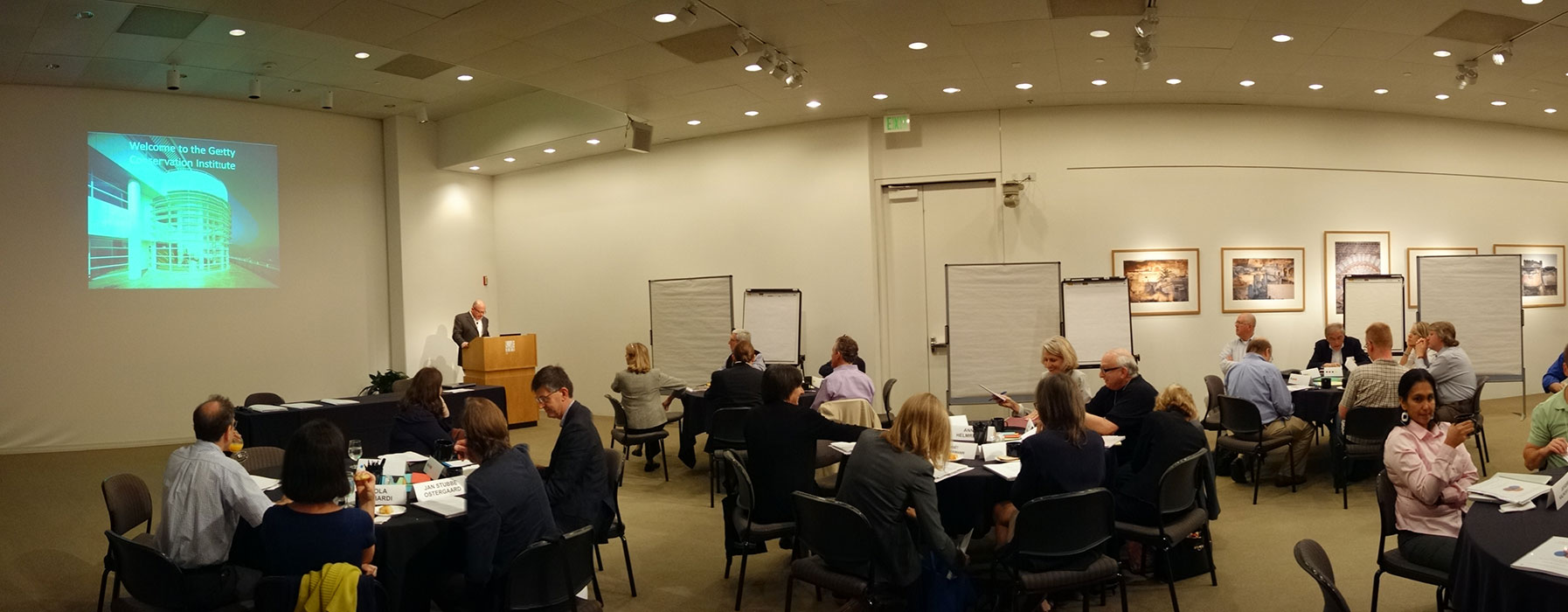Project History
Experts Meeting
In September 2013, the GCI convened a meeting of experts to explore the extent to which computer-assisted technologies may help cultural heritage researchers integrate different types of data, including those from different researchers and different institutions, in a way that facilitates the extraction, sharing and understanding of new information by a broad community of users.
Thirty experts participated in the meeting, representing the fields of conservation, conservation science, art history, imaging science, data visualization, data and information science, astronomy, computer science, medicine, and software development. Institutions represented included cultural heritage institutions (museums and research/teaching organizations), universities, government agencies, and corporations.
During two and a half days of animated discussion, meeting participants discussed the state of the field in both cultural heritage research practice and computer-assisted technologies, identified new avenues of research that would be made possible or enhanced by data integration, suggested measures for implementing and supporting computer-assisted solutions to data integration, and identified priorities for action.
Read more about the meeting's recommendations and outcomes in the meeting report.
This meeting was generously supported by Dan Greenberg and Susan Steinhauser.
Initial Phase
In 2014, the initial three-year phase of the DISCO: Data Integration for Conservation Science project began, funded by the Seaver Institute. This phase included three main components: Foundational Research, Framework Development, and Proof-of-Concept.
Foundational Research
Baseline Study - To ensure the project effectively capitalizes on existing work–whether in cultural heritage or other relevant fields, such as analytical chemistry, forensics, or digital imaging–a baseline study was conducted. The study summarized relevant existing projects' aims and scope, milestones, progress-to-date, pitfalls and limitations, and lessons learned during the projects' development and execution. Additionally, models for open-source and open data projects were reviewed.
Use Cases - To ensure that the data integration environment ultimately developed meets the research needs of the different potential user groups (stakeholders), comprehensive use cases were prepared. Use case analysis is a technique commonly employed in software development to identify the necessary functional requirements through an analysis of the needs of each group of potential end-users. For the cultural heritage research community, end-user groups include practicing conservators, scientists, and curators, as well as academic research partners and other constituents active in cultural heritage research.
Review of Standards and Software Tools - Successful data integration requires the development of common metadata standards and standard ontologies, agreed upon by the international cultural heritage community. Therefore the project team undertook a review of existing relevant standards for the core data (i.e., technical conservation images and scientific data) and associated metadata, as well as existing relevant dedicated vocabularies and ontologies necessary to enable a linked open data approach to data integration.
Framework Development
Framework development included reviewing and refining the standards identified by the project as necessary for successful data integration and identifying software requirements for the tools to be developed. While several relevant standards currently exist for core data, metadata, ontologies, and vocabularies, refinement or further development will likely be necessary in order to sufficiently describe the breadth of scientific and imaging data routinely collected in the field of cultural heritage research.
Using the results of the standards review and the use cases together, a comprehensive set of software requirements were created to guide the development of the proof-of-concept system.
Proof-of-Concept
In 2017, the initial phase of the DISCO: Data Integration for Conservation Science project culminated in the development of a proof-of-concept software application that addressed some key requirements for data integration.
The proof-of-concept system was developed using the Arches cultural heritage data management platform and incorporated IIIF standards and semantic modeling using the CIDOC Conceptual Reference Model. Some features that were demonstrated included image annotation and the ability to visualize instrumentation data using interactive charts.
Current Development
The DISCO: Data Integration for Conservation Science project is currently developing a software system that expands upon the proof-of-concept system developed in the initial phase of the project.
Page updated: January 2019

